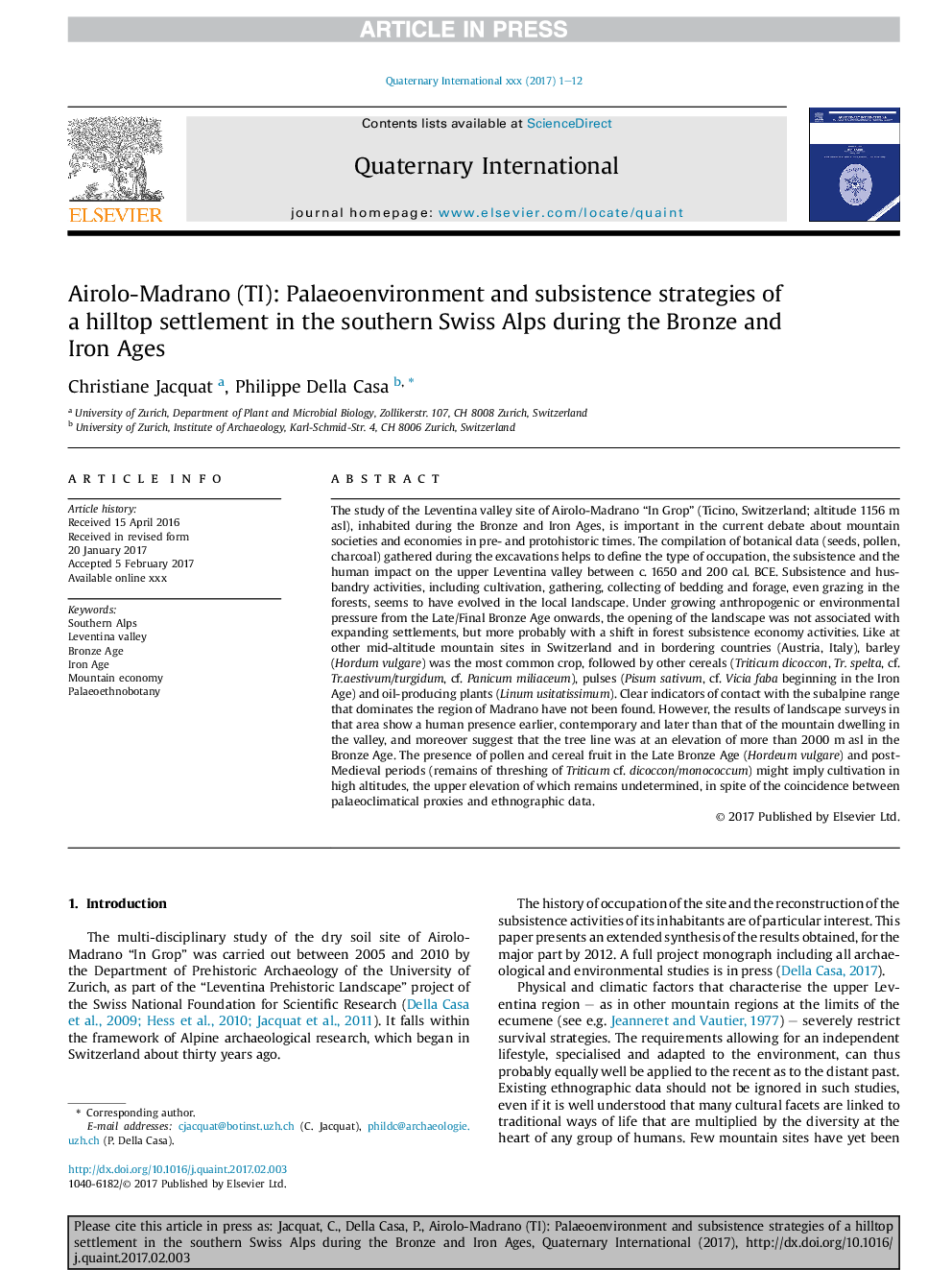| کد مقاله | کد نشریه | سال انتشار | مقاله انگلیسی | نسخه تمام متن |
|---|---|---|---|---|
| 7449030 | 1484027 | 2018 | 12 صفحه PDF | دانلود رایگان |
عنوان انگلیسی مقاله ISI
Airolo-Madrano (TI): Palaeoenvironment and subsistence strategies of a hilltop settlement in the southern Swiss Alps during the Bronze and Iron Ages
دانلود مقاله + سفارش ترجمه
دانلود مقاله ISI انگلیسی
رایگان برای ایرانیان
کلمات کلیدی
موضوعات مرتبط
مهندسی و علوم پایه
علوم زمین و سیارات
زمین شناسی
پیش نمایش صفحه اول مقاله

چکیده انگلیسی
The study of the Leventina valley site of Airolo-Madrano “In Grop” (Ticino, Switzerland; altitude 1156Â m asl), inhabited during the Bronze and Iron Ages, is important in the current debate about mountain societies and economies in pre- and protohistoric times. The compilation of botanical data (seeds, pollen, charcoal) gathered during the excavations helps to define the type of occupation, the subsistence and the human impact on the upper Leventina valley between c. 1650 and 200Â cal. BCE. Subsistence and husbandry activities, including cultivation, gathering, collecting of bedding and forage, even grazing in the forests, seems to have evolved in the local landscape. Under growing anthropogenic or environmental pressure from the Late/Final Bronze Age onwards, the opening of the landscape was not associated with expanding settlements, but more probably with a shift in forest subsistence economy activities. Like at other mid-altitude mountain sites in Switzerland and in bordering countries (Austria, Italy), barley (Hordum vulgare) was the most common crop, followed by other cereals (Triticum dicoccon, Tr. spelta, cf. Tr.aestivum/turgidum, cf. Panicum miliaceum), pulses (Pisum sativum, cf. Vicia faba beginning in the Iron Age) and oil-producing plants (Linum usitatissimum). Clear indicators of contact with the subalpine range that dominates the region of Madrano have not been found. However, the results of landscape surveys in that area show a human presence earlier, contemporary and later than that of the mountain dwelling in the valley, and moreover suggest that the tree line was at an elevation of more than 2000Â m asl in the Bronze Age. The presence of pollen and cereal fruit in the Late Bronze Age (Hordeum vulgare) and post-Medieval periods (remains of threshing of Triticum cf. dicoccon/monococcum) might imply cultivation in high altitudes, the upper elevation of which remains undetermined, in spite of the coincidence between palaeoclimatical proxies and ethnographic data.
ناشر
Database: Elsevier - ScienceDirect (ساینس دایرکت)
Journal: Quaternary International - Volume 484, 10 August 2018, Pages 32-43
Journal: Quaternary International - Volume 484, 10 August 2018, Pages 32-43
نویسندگان
Christiane Jacquat, Philippe Della Casa,